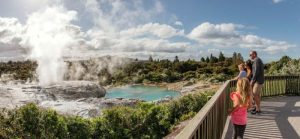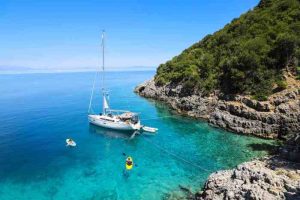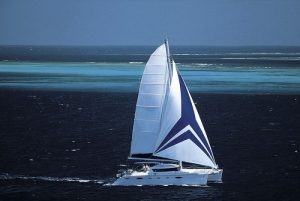
Embark on a journey into the heart of polar regions with this exploration of polar trekking expeditions. We’ll delve into the thrilling challenges and breathtaking beauty of traversing the Arctic and Antarctic landscapes, examining the diverse expedition types, levels of difficulty, and essential preparation required for a safe and rewarding adventure.
From meticulous planning and essential gear considerations to understanding environmental responsibilities and risk mitigation strategies, this guide provides a holistic overview of what to expect. We will also compare polar trekking with other adventure travel activities, highlighting its unique aspects and the unparalleled experiences it offers.
Defining Polar Trekking Expeditions
Polar trekking expeditions offer unparalleled opportunities to experience the raw beauty and challenging environments of the Earth’s polar regions. These journeys demand meticulous planning, specialized equipment, and a high degree of physical and mental resilience. They differ significantly based on location, difficulty, and the specific objectives of the expedition.
Types of Polar Trekking Expeditions: Arctic vs. Antarctic
Arctic expeditions typically take place in the northern hemisphere, encompassing regions like Greenland, Svalbard, and the Canadian Arctic. These areas are characterized by vast ice caps, glaciers, and often unpredictable weather conditions. Antarctic expeditions, conversely, occur in the southern hemisphere on the Antarctic continent and its surrounding islands. The Antarctic offers a more extreme environment, with significantly colder temperatures, stronger winds, and a more isolated landscape.
Arctic treks might involve traversing glaciers, navigating ice floes, or exploring remote coastal areas. Antarctic expeditions frequently involve navigating vast expanses of ice, potentially encountering crevasses, and often requiring specialized skills like ice climbing or glacier travel.
Levels of Difficulty and Experience
Polar trekking expeditions range widely in difficulty, catering to various levels of experience. Beginner expeditions might involve guided walks on well-established trails with minimal technical challenges, often focusing on accessible areas with established camps and support infrastructure. Intermediate expeditions might demand more physical fitness, navigational skills, and the ability to handle basic camping tasks in challenging conditions. These might involve longer distances, less support, and potentially some exposure to more challenging terrain.
Advanced expeditions are geared towards experienced adventurers with significant mountaineering, winter camping, and polar travel experience. These expeditions often involve self-sufficiency, navigating remote and challenging terrain, and managing potential risks independently.
Essential Gear and Equipment for Polar Trekking
Proper equipment is paramount for safety and success on a polar trek. This includes, but is not limited to: high-quality, waterproof and insulated outerwear; multiple layers of thermal base layers; sturdy, insulated boots designed for extreme cold; specialized polar trekking poles; a high-quality sleeping bag rated for extreme cold; a reliable tent designed for polar conditions; a stove and cooking system; sufficient food supplies; navigation equipment (GPS, map, compass); a first-aid kit; communication devices (satellite phone or personal locator beacon); sunglasses and sunscreen; and headlamps.
The specific gear list will vary depending on the expedition’s duration, location, and difficulty.
Comparison of Polar Trekking Destinations
| Destination | Pros | Cons | Difficulty Level |
|---|---|---|---|
| Arctic (Svalbard) | Relatively accessible, diverse landscapes, opportunities for wildlife viewing (polar bears, walruses). | Unpredictable weather, potential for polar bear encounters. | Beginner to Advanced |
| Arctic (Greenland) | Stunning glaciers, unique cultural experiences (Inuit communities), opportunities for ice climbing. | Remote, challenging logistics, requires specialized skills for some areas. | Intermediate to Advanced |
| Antarctic Peninsula | Abundant wildlife (penguins, seals, whales), dramatic ice landscapes, unique wilderness experience. | Expensive, highly regulated, weather conditions can be extremely harsh. | Intermediate to Advanced |
| Antarctica (Interior) | Ultimate challenge, unparalleled isolation, extreme wilderness experience. | Extremely expensive, requires extensive experience and specialized skills, high risk. | Advanced only |
Planning and Preparation for a Polar Trekking Expedition

Embarking on a polar trekking expedition requires meticulous planning and preparation to ensure a safe and successful journey. This involves securing necessary permits, arranging logistics, and undertaking rigorous physical and mental training. Overlooking any aspect can significantly impact the expedition’s outcome.
Permits and Logistics
Securing the necessary permits is the first crucial step. This varies greatly depending on the specific location (Antarctica, Arctic regions of Canada, Greenland, Svalbard, etc.). For instance, travel to Antarctica usually necessitates permits from the relevant national Antarctic program (such as the US Antarctic Program or the British Antarctic Survey) and potentially environmental permits. Arctic expeditions may require permits from the governing country or territory.
Logistics encompass arranging transportation to the starting point, arranging for the necessary equipment (including specialized gear, such as snowshoes, skis, and appropriate clothing), establishing communication systems (satellite phones are crucial), and coordinating emergency rescue plans. Detailed route planning, considering weather patterns and potential hazards, is also paramount. This often involves consulting with experienced polar guides and utilizing relevant mapping software.
Sample Itinerary: A Week-Long Polar Trekking Expedition
This example focuses on a hypothetical week-long expedition in Svalbard, Norway, and is intended as an illustration only. Actual itineraries will vary significantly based on location, specific goals, and group experience.
| Day | Activity | Details |
|---|---|---|
| 1 | Arrival in Longyearbyen & Gear Check | Travel to Longyearbyen, Svalbard. Check and finalize all equipment. Briefing from guides. |
| 2 | Travel to Expedition Start Point & Camp Setup | Helicopter transfer to a pre-determined starting point. Set up base camp. |
| 3-5 | Trekking Across the Arctic Landscape | Daily treks across glaciers and tundra. Focus on navigation, safe travel techniques, and appreciating the environment. |
| 6 | Exploration and Photography | Opportunity for exploring nearby areas and capturing the unique Arctic scenery. |
| 7 | Return to Longyearbyen | Trek back to the designated pick-up point. Helicopter transfer back to Longyearbyen. |
Physical and Mental Preparation
Physical fitness is non-negotiable. Months of dedicated training are essential, focusing on cardiovascular endurance, strength training (especially legs and core), and cold-weather acclimatization. Regular hikes with weighted packs are highly beneficial. Mental preparation is equally important. Polar trekking demands resilience, adaptability, and the ability to cope with challenging conditions.
Experience in navigating and camping in remote, cold environments is extremely advantageous. Mental preparedness often involves practicing mindfulness and stress management techniques.
Pre-Trip Checklist
Thorough preparation minimizes risks. A comprehensive checklist is vital.
- Health Checks: Consult your physician for a comprehensive check-up, including blood tests and ECG, especially if you have pre-existing conditions.
- Vaccinations: Discuss necessary vaccinations with your doctor. These may include tetanus, diphtheria, and possibly others depending on your specific destination.
- Gear Check: Verify all equipment is in excellent condition, including clothing (layers of thermal base layers, fleece mid-layers, waterproof outer layers), boots, sleeping bag, tent, cooking equipment, navigation tools (GPS, map, compass), and first-aid kit.
- Fitness Training: Document a rigorous training plan that includes cardio, strength training, and acclimatization to cold conditions.
- Emergency Contacts: Inform family and friends of your itinerary and emergency contact information.
- Travel Insurance: Ensure you have comprehensive travel insurance that covers medical emergencies, evacuation, and potential equipment loss.
Safety and Risk Management during Polar Trekking

Polar trekking presents unique and significant challenges demanding meticulous safety planning and execution. The extreme environment, remoteness, and unpredictable weather conditions necessitate a comprehensive understanding of potential hazards and robust risk mitigation strategies. Failure to adequately address these factors can have severe, even life-threatening, consequences.
Potential Hazards and Risks
The polar environment poses a multitude of dangers. These risks are interconnected and can compound rapidly, creating highly volatile situations. Understanding these risks is paramount for effective risk management. For instance, a seemingly minor equipment malfunction could escalate into a significant survival challenge if not swiftly addressed.
- Extreme Cold: Hypothermia is a constant threat, exacerbated by wind chill and moisture. Even seemingly minor exposure can lead to serious health problems.
- Whiteouts: Sudden changes in weather can reduce visibility to near zero, making navigation extremely difficult and increasing the risk of disorientation and getting lost.
- Crevasses: Hidden fissures in glaciers pose a significant risk of falls, often leading to serious injuries or death. Careful route planning and crevasse rescue training are essential.
- Wildlife Encounters: Polar bears, for example, are apex predators. Encountering them can be dangerous, requiring appropriate deterrents and safety protocols.
- Equipment Failure: Malfunctioning equipment, such as stoves, sleeping bags, or communication devices, can severely impact survival prospects. Redundancy and regular maintenance are crucial.
- Injuries and Illness: The remoteness of polar regions makes access to medical care extremely limited. Proper first-aid training and well-stocked medical kits are therefore indispensable.
Safety Measures and Protocols
Implementing robust safety measures is not merely advisable; it’s essential for survival. These measures should be integrated into every aspect of the expedition, from pre-trip planning to daily routines on the ice.
- Comprehensive Pre-Trip Planning: This includes thorough route planning, meticulous equipment checks, and extensive training in relevant skills, such as crevasse rescue and winter camping.
- Teamwork and Communication: Effective communication and collaboration are critical for addressing challenges and ensuring everyone’s safety. Regular check-ins and clear communication protocols are essential.
- Weather Monitoring: Closely monitoring weather forecasts and adapting plans accordingly is crucial. Sudden changes in weather can dramatically alter conditions and increase risks.
- Navigation and Route Planning: Utilizing GPS devices, maps, and compasses, along with backup navigation systems, is crucial for safe and efficient travel. Detailed route plans should account for potential hazards and alternate routes.
- Appropriate Clothing and Gear: Layering clothing to regulate body temperature, using high-quality waterproof and windproof outerwear, and having appropriate footwear are all essential aspects of preventing hypothermia and other cold-related injuries.
- Polar Bear Safety: Carrying bear spray, traveling in groups, and employing noise-making devices can deter polar bear encounters. Knowing how to react in a bear encounter is also crucial.
Emergency Procedures
The remoteness of polar regions necessitates a thorough understanding of emergency procedures. Swift and decisive action is often the difference between survival and tragedy. Detailed plans should be prepared and regularly reviewed.
- Emergency Communication: Satellite phones and personal locator beacons (PLBs) are crucial for contacting emergency services in remote areas. Knowing how to use these devices effectively is critical.
- First Aid and Medical Care: Team members should possess comprehensive first-aid training and be prepared to administer basic medical care. A well-stocked medical kit containing essential supplies is also crucial.
- Shelter and Survival Skills: Knowing how to build emergency shelters, start fires, and conserve energy are essential survival skills in the event of unforeseen circumstances.
- Crevasse Rescue Techniques: Proficiency in crevasse rescue techniques is essential for minimizing the risk of serious injury or death from crevasse falls. Regular practice and drills are vital.
- Evacuation Procedures: Pre-determined evacuation plans, including designated rendezvous points and communication protocols, should be established in advance. These plans should consider various scenarios, such as weather delays or medical emergencies.
Using Communication Devices and Emergency Beacons
Effective communication is vital in polar regions. Satellite phones offer voice communication, while personal locator beacons (PLBs) transmit a distress signal to emergency response services.
Satellite phones require a clear view of the sky for optimal performance. Batteries should be regularly checked and spare batteries carried. It’s crucial to understand the phone’s operational limitations and have a pre-planned communication schedule.
PLBs automatically transmit a distress signal including GPS coordinates when activated. They are designed to be activated in emergencies only, as they can trigger costly rescue operations. It’s essential to register the PLB with relevant authorities before the expedition.
Environmental Considerations and Sustainability in Polar Trekking
Polar trekking, while offering an unparalleled adventure, carries a significant responsibility towards the delicate ecosystems of the Arctic and Antarctic. The pristine beauty and unique wildlife of these regions are vulnerable to the impacts of human activity, making sustainable practices paramount for preserving their integrity for future generations. Understanding and minimizing our environmental footprint is not just ethically responsible but crucial for ensuring the longevity of these extraordinary landscapes.The environmental impact of polar trekking expeditions is multifaceted.
Human presence, even with minimal impact strategies, inevitably alters the fragile balance of these ecosystems. Foot traffic compacts snow and ice, disrupting natural processes and potentially affecting the breeding grounds of wildlife. Waste disposal, even if meticulously managed, poses a risk of pollution. The introduction of non-native species through clothing or equipment is another potential concern, as these invasive species can outcompete native flora and fauna.
Furthermore, the carbon footprint associated with travel to and from these remote locations is substantial, contributing to climate change, which significantly threatens the polar regions themselves.
Minimizing Environmental Impact During Polar Trekking
Effective waste management is crucial. This involves implementing strict “leave no trace” principles, meticulously packing out all waste, including human waste, and utilizing biodegradable products whenever possible. Expedition operators should invest in advanced waste management systems, including specialized composting toilets and efficient recycling programs. Careful planning of routes can also minimize environmental disturbance, avoiding sensitive areas and prioritizing established trails whenever feasible.
Educating trekkers about the importance of sustainable practices before, during, and after the expedition is equally vital. This includes providing detailed guidelines on responsible waste disposal, respecting wildlife, and avoiding unnecessary disturbances to the natural environment. The use of sustainable and durable equipment further reduces the environmental burden. Opting for equipment made from recycled materials or with a long lifespan decreases the overall consumption and waste generation associated with the expedition.
Sustainable Tourism Initiatives in Polar Regions
Several organizations and tourism operators are actively implementing sustainable tourism initiatives in polar regions. These initiatives often involve collaborations with local communities and scientific researchers to develop environmentally responsible practices. Examples include the development of eco-lodges with minimal environmental impact, utilizing renewable energy sources, and promoting responsible wildlife viewing practices. Strict regulations on visitor numbers and access to sensitive areas are also being implemented in several locations to prevent overcrowding and habitat degradation.
Furthermore, many operators are investing in carbon offsetting programs to compensate for the emissions associated with their expeditions, contributing to global efforts to mitigate climate change.
Respecting Wildlife and Preserving the Natural Environment
Respecting wildlife and preserving the natural environment is fundamental to sustainable polar trekking. This includes maintaining a safe distance from animals, avoiding disturbing their natural behavior, and refraining from feeding them. Photography should be conducted responsibly, without causing stress or harm to animals. Educating trekkers on appropriate wildlife viewing practices is crucial to ensuring that interactions remain respectful and non-invasive.
Furthermore, respecting the cultural heritage of indigenous communities living in or near polar regions is essential. This involves seeking their permission before entering their territories, respecting their traditions, and supporting their efforts to conserve their environment and culture. The preservation of these unique ecosystems depends on a collective commitment to responsible tourism, ensuring that the beauty and integrity of these regions are maintained for generations to come.
Comparing Polar Trekking with Other Adventure Travel Activities
Polar trekking, while sharing some similarities with other adventure travel activities, offers a uniquely challenging and rewarding experience. Its distinct characteristics stem from the extreme environment, demanding physical and mental preparation, and the profound sense of isolation and connection with nature. Comparing it to other activities highlights both its commonalities and its unique appeal.
Polar Trekking versus Other Adventure Sports Travel
Polar trekking differs significantly from many other adventure sports. While activities like mountaineering, rock climbing, and white-water rafting involve high levels of technical skill and risk, polar trekking emphasizes endurance, resilience, and adaptability to unpredictable weather conditions. The focus is less on conquering a specific challenge and more on navigating a vast, unforgiving landscape. The technical skills required are less specialized, focusing more on navigation, camping in extreme cold, and self-sufficiency.
Adventure sports often involve shorter, more intense bursts of activity, while polar trekking demands sustained effort over extended periods.
Polar Trekking versus Birdwatching Tours
Although both polar trekking and birdwatching tours involve travel to remote locations, the experiences and required skills differ considerably. Birdwatching tours typically focus on observation and identification of avian species, requiring specialized knowledge of ornithology and often employing binoculars and spotting scopes. Polar trekking, conversely, demands a high level of physical fitness, navigational skills, and the ability to cope with extreme weather conditions.
While wildlife encounters are possible during polar trekking, they are not the primary focus. The experience is more about the journey itself and the challenge of traversing the polar landscape.
Polar Trekking versus Arctic/Polar Expeditions
The distinction between polar trekking and broader arctic/polar expeditions lies in the emphasis on trekking. Arctic/polar expeditions can encompass a wide range of activities, including scientific research, mountaineering, and exploration using various modes of transport like ships or snowmobiles. Polar trekking, however, specifically focuses on traversing the polar regions on foot, often over considerable distances. It prioritizes self-powered travel and a more intimate connection with the environment.
Comparison of Polar Trekking with Other Adventure Activities
The following table compares polar trekking with a variety of other adventure activities, highlighting their key differences:
| Activity | Physical Demands | Technical Skills | Environmental Impact |
|---|---|---|---|
| Polar Trekking | High endurance, strength, cold tolerance | Navigation, winter camping, self-sufficiency | Potentially high, depending on practices |
| Golf Vacations | Moderate | Golfing skills | Moderate, depending on course management |
| Sailing | Moderate to high, depending on conditions | Sailing skills, navigation | Moderate, depending on vessel and practices |
| Jungle Exploration | High endurance, strength | Jungle survival skills, navigation | Potentially high, depending on practices |
| Wellness Cruises | Low | None required | Moderate, depending on ship operations |
| Geological Destinations | Low to moderate, depending on location | Basic geological knowledge (often optional) | Low to moderate, depending on tourism practices |
| Music/Performing Arts Travel | Low | Musical or performance skills (for performers) | Low |
| Educational Tours | Low | None required, though prior knowledge can enhance experience | Low to moderate, depending on tour practices |
Illustrative Examples of Polar Trekking Experiences
Polar trekking expeditions offer unparalleled opportunities for adventure and self-discovery, providing unforgettable encounters with breathtaking landscapes and unique wildlife. These experiences, however, are demanding, requiring meticulous planning and a high degree of resilience. The following examples illustrate the diverse aspects of polar trekking, highlighting both the challenges and the profound rewards.
A Memorable Antarctic Trekking Experience
My most memorable polar trek took place in Antarctica, specifically on the Antarctic Peninsula. The landscape was a dramatic interplay of towering icebergs calving from glaciers, their brilliant blue hues contrasting sharply with the white expanse of snow and ice. The air, crisp and clean, carried the scent of ozone and the distant roar of the ocean. We encountered several groups of penguins – Adélie and Gentoo – waddling across the ice, their comical gait a welcome distraction from the physical demands of the trek.
One particularly memorable moment involved watching a leopard seal effortlessly navigate the icy waters, its sleek body a testament to the harsh beauty of its environment. The biggest challenge was navigating crevasses hidden beneath the snow, requiring constant vigilance and the use of specialized equipment. The reward, however, was unparalleled: the feeling of accomplishment upon reaching a remote, pristine beach, surrounded by the vast, untouched wilderness of Antarctica.
Antarctic and Arctic Flora and Fauna
The flora and fauna of polar regions are remarkably adapted to the extreme conditions. In Antarctica, life is largely concentrated in the ocean. The frigid waters teem with krill, the foundation of the Antarctic food web, supporting larger creatures like whales, seals, and penguins. On land, the vegetation is sparse, consisting mainly of mosses, lichens, and algae, clinging tenaciously to rocks and ice-free patches.
The Arctic, while also harsh, boasts a slightly more diverse ecosystem. Here, you might encounter Arctic foxes, polar bears (depending on location), reindeer, and various seabirds. The flora includes dwarf shrubs, hardy grasses, and flowering plants, which bloom briefly during the short summer. The unique adaptations of these species – thick fur coats, efficient metabolisms, and specialized feeding strategies – are a testament to the power of natural selection in extreme environments.
The Breathtaking Beauty of Polar Landscapes
The scale and sensory details of polar landscapes are simply awe-inspiring. Imagine standing on a vast ice sheet, the seemingly endless expanse of white stretching to the horizon, broken only by the occasional jagged peak or a distant iceberg. The silence is profound, broken only by the crunch of your boots on the snow and the distant calls of seabirds.
The light, especially during the polar day, possesses an ethereal quality, casting long shadows and illuminating the icy landscape with a soft, diffused glow. The textures are equally striking: the smooth, polished surface of an iceberg contrasts sharply with the rough, granular texture of the snow and the jagged edges of ice formations. The intense cold is palpable, a physical sensation that adds to the overall experience.
The sheer scale of the environment, the overwhelming sense of space and solitude, leaves a lasting impression on the soul.
Reaching the Summit of Mount Erebus
Reaching the summit of Mount Erebus, an active volcano in Antarctica, presented a unique set of challenges and rewards. The climb itself was physically demanding, requiring specialized mountaineering skills and equipment to navigate the steep, icy slopes and crevasses. The altitude, the extreme cold, and the ever-present risk of volcanic activity added to the difficulty. However, the rewards were immeasurable.
The panoramic view from the summit, overlooking the vast Antarctic landscape, was breathtaking. Witnessing the active volcano firsthand, with its fumaroles emitting plumes of steam and gas, was a truly awe-inspiring experience. The sense of accomplishment upon reaching the summit, after overcoming significant physical and mental challenges, was profoundly satisfying.
Epilogue
Ultimately, polar trekking expeditions offer an unparalleled opportunity for self-discovery and connection with nature’s untamed beauty. While demanding physical and mental fortitude, the rewards—the breathtaking landscapes, unique wildlife encounters, and personal accomplishment—are immeasurable. This comprehensive guide aims to equip aspiring trekkers with the knowledge and confidence needed to plan and execute a safe and environmentally responsible polar adventure.
Common Queries
What is the best time of year to go on a polar trekking expedition?
The ideal time depends on the specific location and desired conditions. Generally, summer months (June-August in the Arctic, November-February in the Antarctic) offer the most favorable weather and daylight hours, but also higher temperatures and more tourists.
How much does a polar trekking expedition cost?
Costs vary significantly based on the duration, location, level of comfort, and included services. Expect to pay several thousand dollars, potentially tens of thousands, for a fully guided expedition.
What level of fitness is required for polar trekking?
A good level of physical fitness is essential. You should be comfortable with long days of hiking, often in challenging conditions. Prior experience with trekking or similar activities is highly recommended.
Are there age restrictions for polar trekking expeditions?
Age restrictions vary by operator and expedition type. Some expeditions may have minimum age limits, while others may have upper limits due to the physical demands. Consult individual operators for specific requirements.





